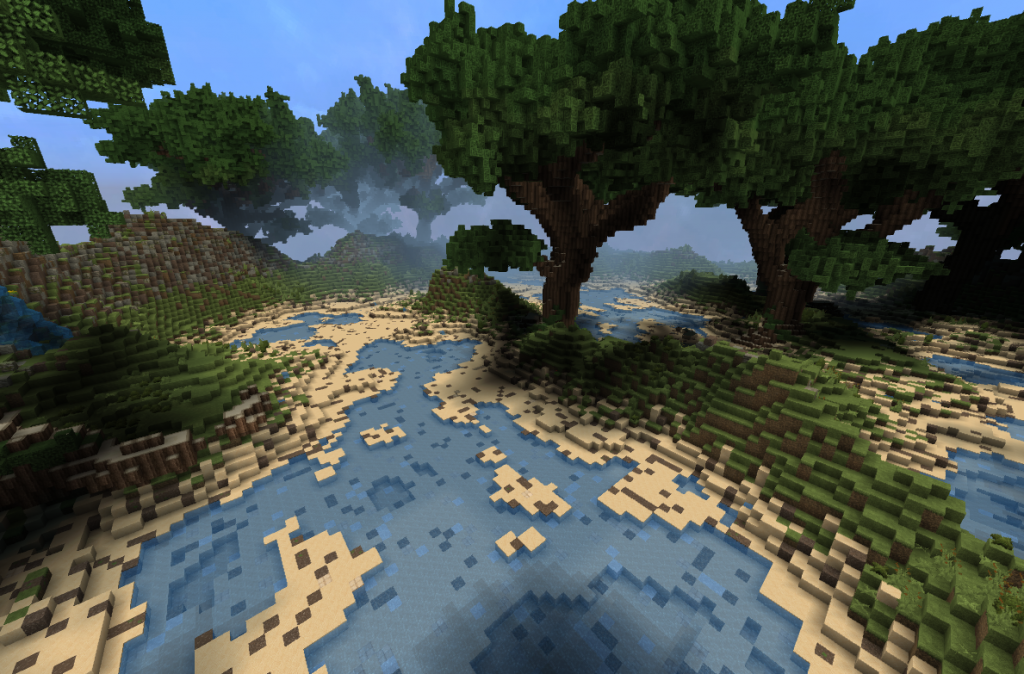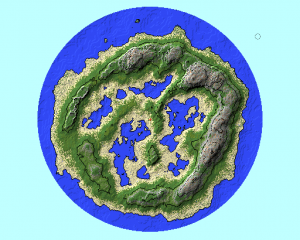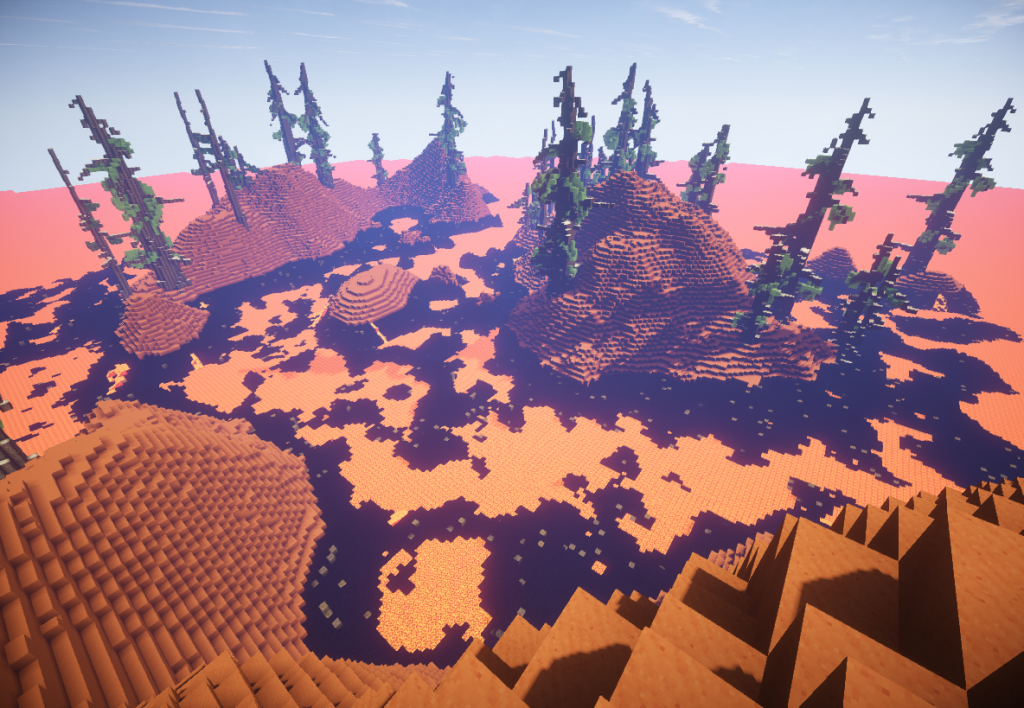Ravenous Recreation
We have been musing over what exactly constitutes Hunger Games in Minecraft, especially since the community already has an idea of what it is and it diverges significantly from the books, movies, and what many of us want our subjects to experience. Setting theory aside for now, I have started prototyping maps for my own gameplay styles and length, rules, item availability, and general layout and theme, hoping to perhaps shed some light on the issue of definition through a hands-on approach.
As it turns out, map making on a small scale in Minecraft, especially if you don’t care too much about proper geography and erosion lines, is hilariously simple and can be learned and applied quickly within an afternoon. Massive custom trees in particular appealed to me, both being a good location for base-style warfare, and being susceptible to fire. Large caverns also became a small obsession, but was abandoned in favour for smaller caves that are open to the sky. While I had found how to make it so all surfaces had a maximum depth of two blocks, it quickly opened the door to permanent hiding underground, and despite my strong desire to have such tactics be available, I did not want it to be so easily accessible that it automatically became the preferred play style. I wanted, and still want, a map that encourages divergent play styles and rewards quick thinking and reflexes as well as tactical play.
In the end, it boiled down to two maps with distinct flavours, which my reluctant “testers” nicknamed “Eden” and “Hell”. Both were small and island-like, with a walking time from one edge to the opposite of about 2 minutes when discounting mountains. From a high point and the default draw distance, it is possible to see the entire map, and those moving upon it, enticing players to fight, destroy bases that others would try to create, or hide to the best of their abilities.

“Eden”
Eden was the first prototype that I worked on, and as the nickname implies, was a small garden-like place with massive trees. Working on the concept of scarcity, Eden had plenty of food sources, but almost no materials of higher “class”. Consequently, weapons other than of stone or wood were incredibly rare, and armour was nearly non-existent. With exactly two diamonds hidden at almost opposite ends of the maps, a diamond sword was a sight to behold, and almost guaranteed victory to the wielder. “Easy” sources of food, that is, mobs and their ilk, were disabled because it granted too much of an edge to those that chose to pursue the warrior’s path.
Pros:
- Large trees became make-shift bases. Bows and arrows, fishing rods, and flint & steel were used in a variety ways to remove “campers” from trees.
- Diverse game styles were common. Some would rush for weapons, but consequently had trouble being fed if they failed to kill anyone. Farmers would sometimes trade food in exchange for protection or to be spared. Alternation upon and modification of these roles were common.
- Kills were almost entirely player-choice, and no one felt “cheated” when an opponent starved or fell to their death.
- Alliances (and betrayals) were common and entertaining for both viewers and participants.
Cons:
- Apart from being explicitly stated in the rules and a requirement to win, there was almost no incentive to kill other players.
- Hiding reached almost epidemic levels. Players realised hidden farms were the easiest way to win rather quickly and gameplay became a strange version of cat and mouse, with the mice sometimes becoming cats out of boredom, and cats becoming mice out of necessity.
- A large number of players was required for the map to be interesting, and when only a few players remained, ending the match was a grueling task that was entertaining for absolutely no one.
- Playing time was long, clocking in at roughly a few hours.
The second map, nicknamed “Hell”, looked like the visual opposite of Eden, but was almost the same topographically. A small map with large trees with grass replaced with red sand, sand replaced with obsidian, and water replaced with lava. In addition, the scarcity of materials and food was switched. Weapons were abundant, as were the materials to make them, but food was incredibly scarce. Forget iron, you were far more likely to be brutally murdered for an apple. Dirt was the gold standard and essential for survival, as was combat. Constant fighting to get food was the norm, and it looked a whole lot more like what the Hunger Games depicts in fiction.
Pros:
- Constant fighting, and no need for artificial incentives.
- Massive satisfaction for winning due to difficulty of survival.
- Hiding for a long time was both difficult in the bare landscape and often suicidal. Only the best could pull it off, and many chose not to even attempt it.
- Playing time was short, clocking in on average at almost an hour, depending on if the game went on until the very end or when equilibrium between players was reached.
Cons:
- Many, many, players died of simple misclicks due to the omnipresent lava, and reduced the sense of satisfaction of some winners.
- Players with little experience in Minecraft or who were not dextrous enough to navigate lava fields had no chance of winning.
- Some players would jump into lava to spite their aggressors by destroying all their possessions.
- Once again, end game dragged on for a very long time.
To summarise, it appears that simple Minecraft worlds and the variation of scarcity of certain materials on its own is enough to create a Hunger Games environment, but which ones were artificially limited changed player behaviour in a myriad of ways. It also caused some moments of reflection, wondering if I prefered the incentive for diplomacy and trade over the incentive for warfare, and whether player satisfaction should be central to the design of the map.
I continue to explore avenues of changing the gameplay; increasing levels of water or lava as time progresses, chests of goodies in certain locations, the addition of a Game Master or Sponsors, and the possibility of a tracking system to make it harder to hide or not and their subsequent impact on emergent play and balance. Nonetheless, this hands-on exploration of environmental factors’ effect on player behaviour was illuminating and I look forward to where it may lead in the final design.


